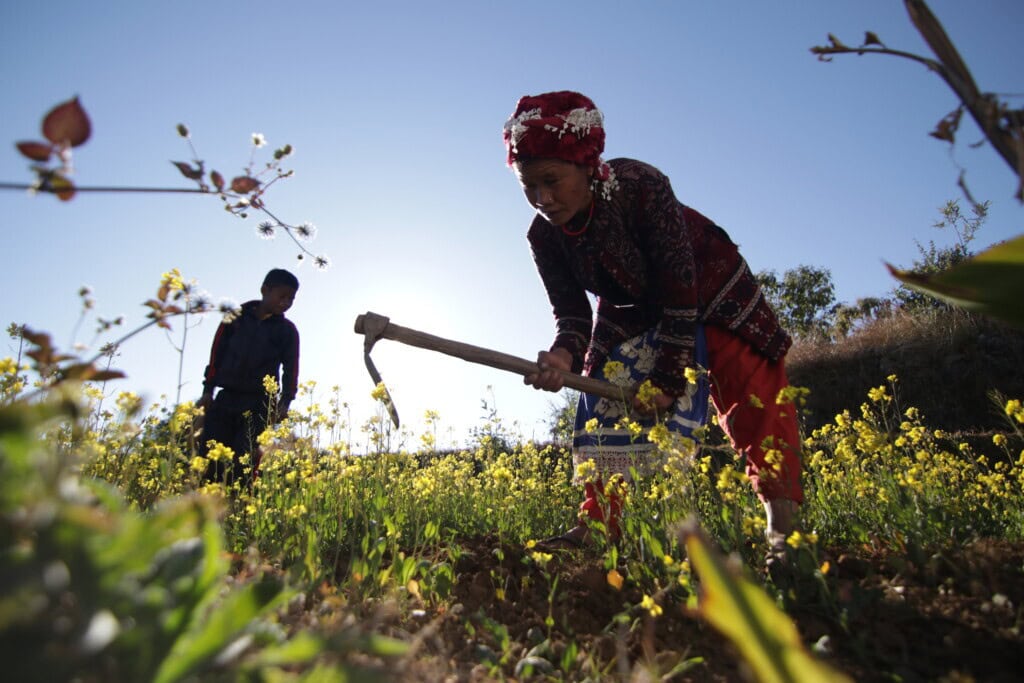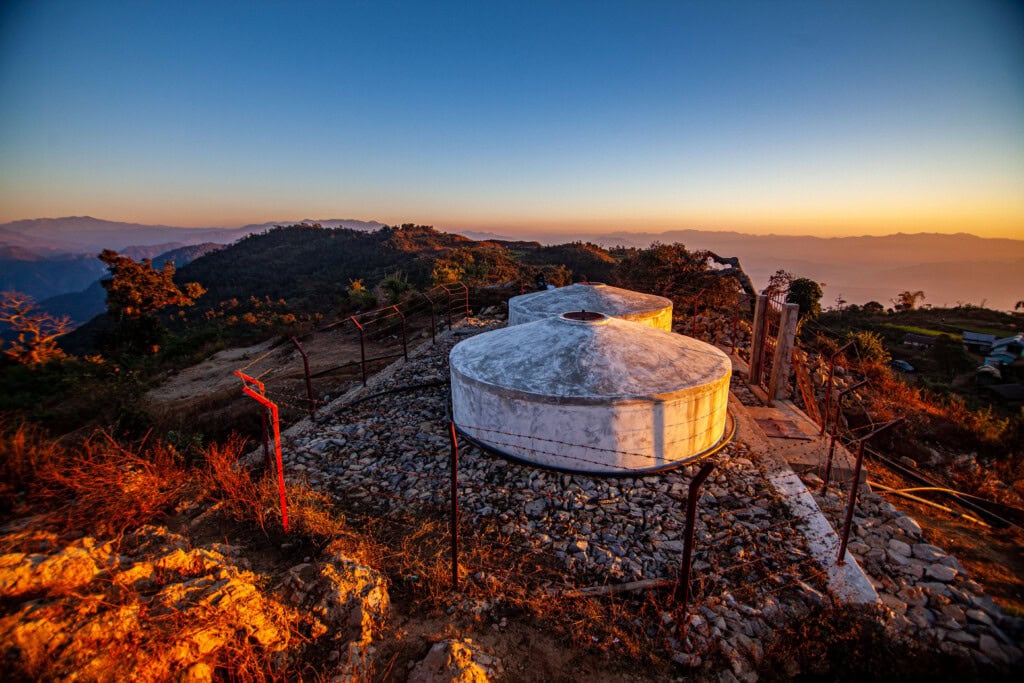Using the sun and gravity to ensure rural communities have affordable and reliable access to water

What is a SolarMUS?
Pronounced ‘solar moose’, the SolarMUS uses energy from the sun to pump water from a distant source to storage tanks strategically placed above a community. These tanks store a large amount of water, usually up to three days’ worth. This ensures a reliable supply of water year-round, even on cloudy days. Once in the storage tanks, the system cleverly lets gravity do the rest, piping water back down hill to tap stands outside each home and within easy reach of fields, and to schools, clinics and other institutions in the community. This is a big reason it is so efficient – only half of the power normally needed to distribute the water is used. With the simple turn of a spout below, water is distributed to households, farms, and businesses on-demand. It is called a multi-use system (MUS) for this very reason. Water can be used for many purposes such as drinking, cooking, sanitation, irrigation, and more.

Where is the SolarMUS appropriate?
The SolarMUS is best used in hilly regions where communities live above their nearest water source. They can also be useful for communities who live in flat areas but are simply a long distance away from a dependable supply of water. Because it relies on solar energy, this system is also best for regions that experience many days of sunshine each year.
Unlike our Hydram systems (which require a high volume of water), this system can be used in areas where the water source is low in quantity, such as a naturally occurring spring. This unique feature, paired with system lifespans of 20 years, make this technology a highly versatile and practical solution.
At present, SolarMUS systems are primarily used within our Nepal programme where communities living in the foothills of the Himalayas have serious restrictions on the water they can access. We work with communities to install the SolarMUS systems in order to improve access to water for household as well as agricultural use. We support communities with water, sanitation and hygiene (WASH) training and agricultural training as well supporting them to access the tools and skills that they need to maintain the system going forward.
These systems have the potential to lift water over 200 vertical metres – this is extremely helpful when working in mountainous terrain like Nepal. SolarMUS represents one of our flag ship technologies, and we have now collaborated with local government and the private sector to install 39 SolarMUS systems across Nepal. These systems are currently lifting an incredible 436,843 litres of water per day (enough for 7,000 showers) to a total of 8,475 people.
How does the SolarMUS really work?

A solar photovoltaic (PV) array generates electricity as Direct Current (DC) from the sun’s light. This electricity drives a motor in a connected pump and brings the pump into operation. The pump lifts water, from the source(s), up to a storage tank or reservoir located above the community. A gravity fed system then distributes the water down to individual tap stands, outside homes and within easy reach of fields.
– A collection tank is constructed close by to collect the water from different sources.
– The pump is submerged under the water in the collection tank or near the collection tank Solar panels are erected close to the collection chamber, ensuring that the solar array gets the maximum number of hours of sunshine as possible.
– The electricity generated from the solar PV array passes through the cable to drive the motor, and the motor operates the pump. If an Alternative Current (AC) pump is used, an inverter is required to convert the DC to AC.
– The pump draws water from the collection tank and delivers it to the storage tank. The storage tank is constructed at the top of the village and the size of the tank is designed to allow at least 3 days of autonomy (i.e. it will be made large enough to hold 3 days’ worth of water). This means that even if there are 3 consecutive days of cloudy weather when the pump is not in operation, there is still sufficient water for distribution.
– A distribution pipe carries the water from the storage tank to a series of taps and outlets at various locations in the community.
– Water can be released on-demand by community members.
SolarMUS technology is a promising renewable energy solution. However, it wouldn’t be sustainable or profitable without the direct involvement, training, and cooperation of communities. This is why we put communities at the centre of our work – working with them from day one to create a long-term vision and management plan. This includes ensuring that communities are setting and collecting affordable water tariffs which go straight into a well-managed community bank account, so that they have the funds in place to repair and maintain the systems throughout the system’s lifetime.